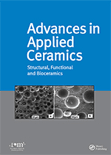
Advances in Applied Ceramics
Scope & Guideline
Fostering Collaboration in the World of Material Sciences
Introduction
Aims and Scopes
- Advanced Ceramics Development:
The journal focuses on the synthesis, processing, and characterization of advanced ceramics, including high-entropy ceramics, biomaterials, and thermoelectric materials. - Ceramic Coatings and Surface Modifications:
Research on coatings for protection against wear and corrosion, as well as surface modifications to enhance the properties of ceramics, is a significant area of focus. - Mechanical and Physical Properties:
A critical aim is to explore the mechanical and physical properties of ceramics, particularly how these properties can be influenced by different processing techniques and material compositions. - Environmental and Biocompatible Applications:
The journal promotes studies that investigate the use of ceramics in environmental applications, such as waste management, and in biocompatible contexts, particularly in medical devices. - Innovative Fabrication Techniques:
An emphasis is placed on novel fabrication methods for ceramics, including 3D printing, gel-casting, and other advanced manufacturing processes.
Trending and Emerging
- 3D Printing and Additive Manufacturing of Ceramics:
Recent publications highlight a significant trend towards the use of 3D printing technologies in ceramics, showcasing innovative applications and new fabrication techniques. - Nano-structured and High-Entropy Ceramics:
Research on nano-structured materials and high-entropy ceramics is gaining traction, indicating a shift towards exploring materials with enhanced properties and performance. - Ceramics in Energy Applications:
Emerging themes include the use of ceramics in energy-related applications, such as thermoelectric materials and solid oxide fuel cells, reflecting a growing interest in sustainable energy solutions. - Bioceramics and Biomedical Applications:
The exploration of ceramics for biomedical uses, particularly in implants and dental applications, is increasingly prominent, showcasing the material's versatility and biocompatibility. - Environmental Sustainability in Ceramic Production:
There is a rising focus on environmentally sustainable practices in ceramic production, including the use of waste materials and eco-friendly processing methods.
Declining or Waning
- Traditional Ceramic Materials:
Research focusing on conventional ceramic materials and processes appears to be waning, as the emphasis shifts towards more innovative and advanced materials. - Basic Sintering Techniques:
While sintering remains important, the exploration of basic sintering techniques without innovative additives or modifications is becoming less frequent. - Generalized Reviews on Ceramic Properties:
There has been a noticeable decrease in generalized review articles that do not focus on specific applications or advanced materials, indicating a shift towards more targeted and application-driven research. - Standard Compositions and Formulations:
The publication of studies involving standard ceramic compositions and formulations is decreasing, reflecting a trend towards exploring novel materials and composites.
Similar Journals
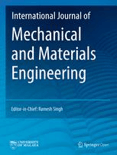
International Journal of Mechanical and Materials Engineering
Unleashing Potential Through Cutting-Edge Engineering InsightsInternational Journal of Mechanical and Materials Engineering is a renowned, open-access journal published by SPRINGER that has established itself as a key platform in the fields of Mechanical Engineering, Materials Science, and Industrial and Manufacturing Engineering. With an impressive Q2 ranking in multiple categories for 2023, including Mechanics of Materials and General Materials Science, the journal provides high-quality research and innovative insights that are critical for advancing the engineering disciplines. Since its inception in 2007, the journal has been pivotal in disseminating knowledge and fostering dialogue amongst researchers, professionals, and students, with the open access model facilitating widespread distribution of its content since 2014. The journal’s affiliation with a prestigious publisher in Switzerland enhances its credibility and reach, making it an invaluable resource for those engaged in cutting-edge research and development in mechanical and materials engineering. With an ISSN of 1823-0334 and an E-ISSN of 2198-2791, this journal invites submissions that contribute to the academic community and inspire future engineering solutions.
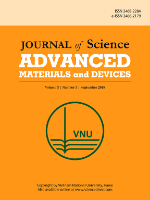
Journal of Science-Advanced Materials and Devices
Leading the Charge in Cutting-Edge Materials ResearchJournal of Science-Advanced Materials and Devices is a leading open-access journal published by Vietnam National University, dedicated to advancing the field of materials science through cutting-edge research and innovative developments. Since its inception in 2016, this journal has become a pivotal platform for sharing insights and discoveries in various subfields, including biomaterials, ceramics and composites, and electronic, optical, and magnetic materials. With impressive quartile rankings, including Q1 across multiple categories in 2023, and a notable Scopus ranking placing it in the top 15th percentile for ceramics and composites, it highlights the journal’s influence and prestige within the global academic community. Open Access since its launch, the journal aims to facilitate unrestricted dissemination of scholarly work, empowering researchers, professionals, and students to engage with the latest advancements. The Journal of Science-Advanced Materials and Devices is vital for those seeking high-quality contributions that influence both theoretical understanding and practical applications in the ever-evolving landscape of materials science.
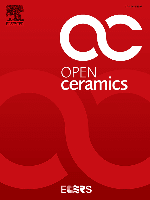
Open Ceramics
Elevating the Dialogue in Ceramic ResearchOpen Ceramics is a pioneering journal published by Elsevier, dedicated to the field of materials science, with a particular focus on ceramics and composites. Launched in 2020, this Open Access journal aims to facilitate unrestricted dissemination of cutting-edge research findings while promoting innovative developments in the utilization of ceramic materials across various applications. As of 2023, Open Ceramics has established a commendable presence in several key categories, achieving Q3 in Biomaterials and Q2 rankings in Ceramics and Composites, Electronic, Optical and Magnetic Materials, and Materials Chemistry. The journal's broad scope appeals to a diverse audience of researchers, professionals, and students interested in the advancements within this essential domain of materials science. With a commitment to quality and relevance, Open Ceramics provides a platform for rigorous peer-reviewed research, thereby enhancing the global dialogue in the field and contributing to the ongoing progress of materials innovation.
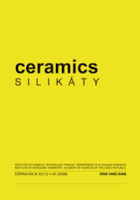
CERAMICS-SILIKATY
Fostering Interdisciplinary Research in Ceramics and CompositesCERAMICS-SILIKATY is a distinguished open-access journal published by the University of Chemistry and Technology, Prague, specializing in the fields of Ceramics and Composites, Analytical Chemistry, Chemical Engineering, and Materials Chemistry. Since its inception in 1991, this journal has played a pivotal role in disseminating cutting-edge research and innovative findings in the study of ceramics, emphasizing both fundamental and applied aspects. With a commitment to accessibility since 2000, CERAMICS-SILIKATY promotes knowledge sharing among researchers, professionals, and students globally. The journal's current standing in the Q3 Quartile across several categories highlights its significant contributions and relevance in the academic community. As a hub for interdisciplinary research, the journal invites submissions that advanced our understanding of ceramic materials and their applications, positioning itself as an essential resource for those engaged in the forefront of materials science.

Fibers is a leading peer-reviewed open access journal published by MDPI, focusing on cutting-edge research within the realm of materials science, particularly in the domains of biomaterials, ceramics and composites, and structural engineering. Established in 2013, the journal has gained recognition for its significant contributions to the field, boasting an impact factor that positions it in the Q2 quartile across multiple categories such as Biomaterials, Ceramics and Composites, Civil and Structural Engineering, and Mechanics of Materials as of 2023. With a Scopus ranking that highlights its prominence—such as in the top 20% in Civil and Structural Engineering—the journal fosters an inclusive platform for academic dialogue and technical advancement. Researchers and professionals can access the journal’s comprehensive articles freely, promoting the dissemination of knowledge that is crucial for the advancement of innovative materials and their applications. Situated in Basel, Switzerland, Fibers continues to be an essential resource for those looking to stay at the forefront of research and technology in material sciences.

Journal of Ceramic Science and Technology
Connecting Theory with Practice in CeramicsJournal of Ceramic Science and Technology, published by GOLLER VERLAG GMBH in Germany, serves as a vital platform for advancements in the field of ceramics and composites. Since its inception in 2010, the journal has contributed significantly to the scholarly literature, encompassing a wide range of topics including the development of new ceramic materials, nanocomposites, and their various applications in industries such as electronics, energy, and medicine. Although currently categorized in the Q4 quartile of ceramics and composites and ranked within the lower percentile in Scopus, the journal strives to bridge the gap between fundamental research and practical implementation, fostering innovative solutions to contemporary materials challenges. With an open-access format, it ensures that valuable findings are disseminated widely, promoting collaboration and knowledge sharing among researchers, professionals, and students in the field. As it converges towards 2024, the Journal of Ceramic Science and Technology remains committed to enhancing the understanding and utilization of ceramic materials, making it an indispensable resource for those dedicated to advancing this dynamic area of study.
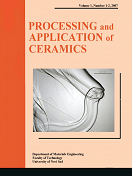
Processing and Application of Ceramics
Fostering Excellence in Ceramic Research and DevelopmentProcessing and Application of Ceramics is a prominent open-access journal dedicated to the advancement of knowledge in the field of ceramics and composites. Published by the University of Novi Sad, Faculty of Technology in Serbia, this journal has been fostering research and innovation since its inception in 2007. With its ISSN 1820-6131 and E-ISSN 2406-1034, this journal is indexed in Scopus, where it holds a ranking of #82 out of 127 in the Materials Science category, placing it in the 35th percentile and within the Q3 quartile as of 2023. Spanning a convergence period from 2014 to 2024, the journal serves as a vital platform for researchers, professionals, and students alike, eager to explore the latest developments in ceramic materials, their processing techniques, and practical applications. The journal's commitment to accessibility and quality makes it an essential resource for those aiming to stay at the forefront of ceramics research.

REFRACTORIES AND INDUSTRIAL CERAMICS
Championing Interdisciplinary Collaboration in CeramicsREFRACTORIES AND INDUSTRIAL CERAMICS is a prestigious journal published by Springer, dedicated to the field of ceramics and composite materials. With an ISSN of 1083-4877 and an E-ISSN of 1573-9139, this journal plays a pivotal role in fostering advances in the development, formulation, and application of refractories and industrial ceramics. The journal has been actively publishing since 1996 and is recognized for its contribution to the academic discourse in the ceramics community. Although it currently holds a Q4 ranking in both Ceramics and Composites and Materials Chemistry categories, it serves as an important platform for emerging research trends and innovations, making it essential reading for researchers, professionals, and students engaged in material science. While access is not open, the journal ensures that high-quality research reaches its audience, reflects the evolving landscape of the ceramics industry, and encourages interdisciplinary collaboration.
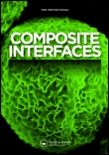
COMPOSITE INTERFACES
Connecting Research and Innovation in Composite ScienceComposite Interfaces is a prominent journal dedicated to advancing the scientific understanding and applications of composite materials and interfaces, published by Taylor & Francis Ltd. Since its inception in 1993, this journal has become a pivotal resource for researchers and practitioners in the fields of ceramics and composites, as well as in physics and materials sciences. With a commendable Q2 ranking in 2023 across multiple categories, including Ceramics and Composites, Physics and Astronomy, and Surfaces, Coatings and Films, Composite Interfaces ensures a high standard of scholarly excellence, reflected in its robust Scopus rankings. While the journal operates under a subscription model, its influential body of work is vital for those seeking to innovate in composite material applications. By fostering scholarly communication, Composite Interfaces plays a crucial role in the progression of material science, an area of increasing relevance in technology and engineering.
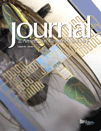
JOURNAL OF THE AMERICAN CERAMIC SOCIETY
Fostering Excellence in Materials InnovationJOURNAL OF THE AMERICAN CERAMIC SOCIETY, a prestigious publication within the field of ceramics and materials science, has been at the forefront of advancing research since its inception in 1918 and will continue to be a leading resource through 2024. Published by WILEY, this journal boasts an impressive impact factor, reflecting its strong reputation in the academic community. With its categorization in the Q1 quartile for both Ceramics and Composites and Materials Chemistry, the journal is ranked among the top in its fields, placing it in the 78th and 76th percentiles, respectively, according to Scopus metrics. Although not an open-access journal, it provides critical insights, robust research findings, and a platform for experts to disseminate their work, making it an essential resource for researchers, professionals, and students alike who are engaged in ceramic sciences and materials innovation. The Journal’s meticulous peer-review process ensures the highest quality and relevance of publications, fostering a rich environment for academic discourse and collaboration.